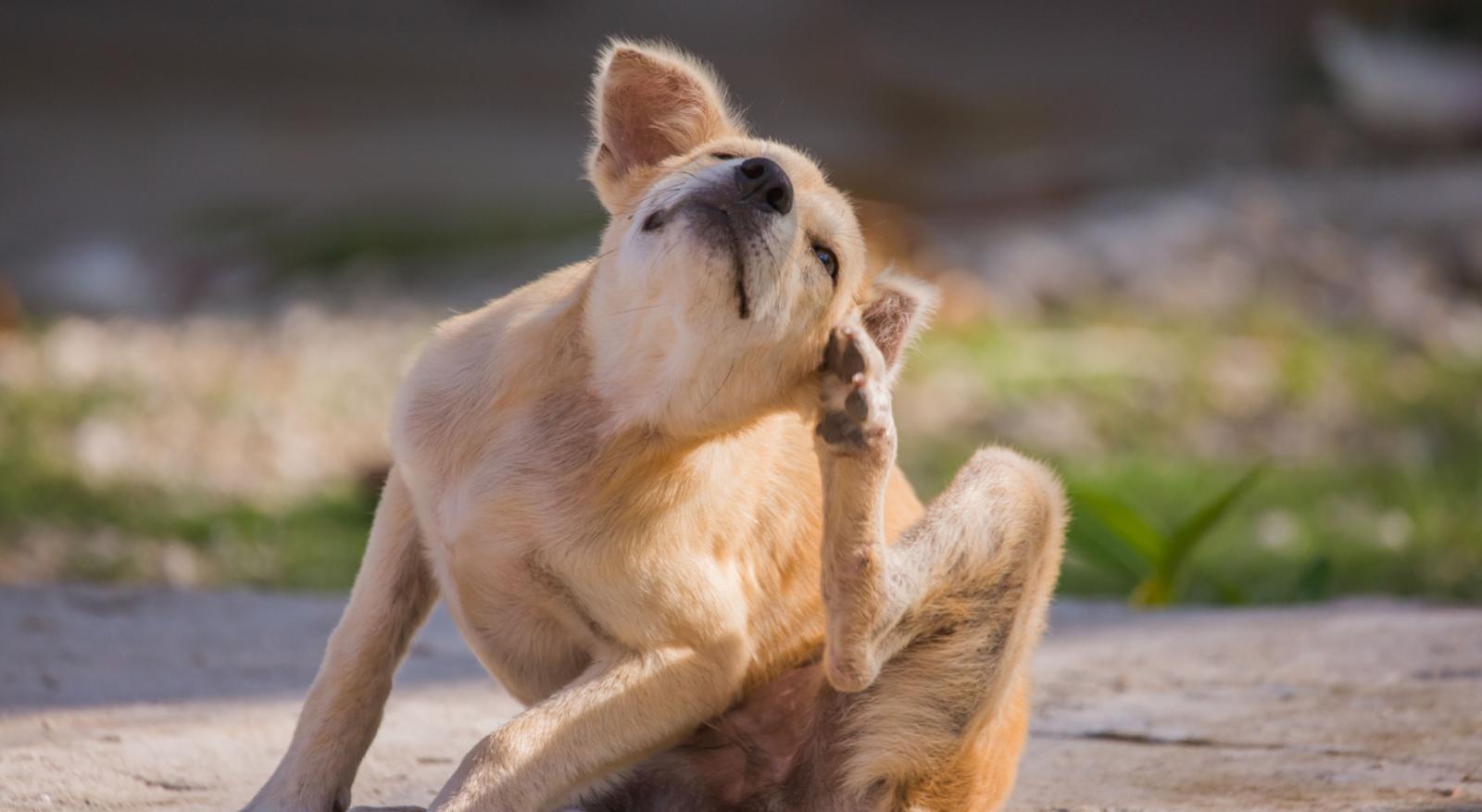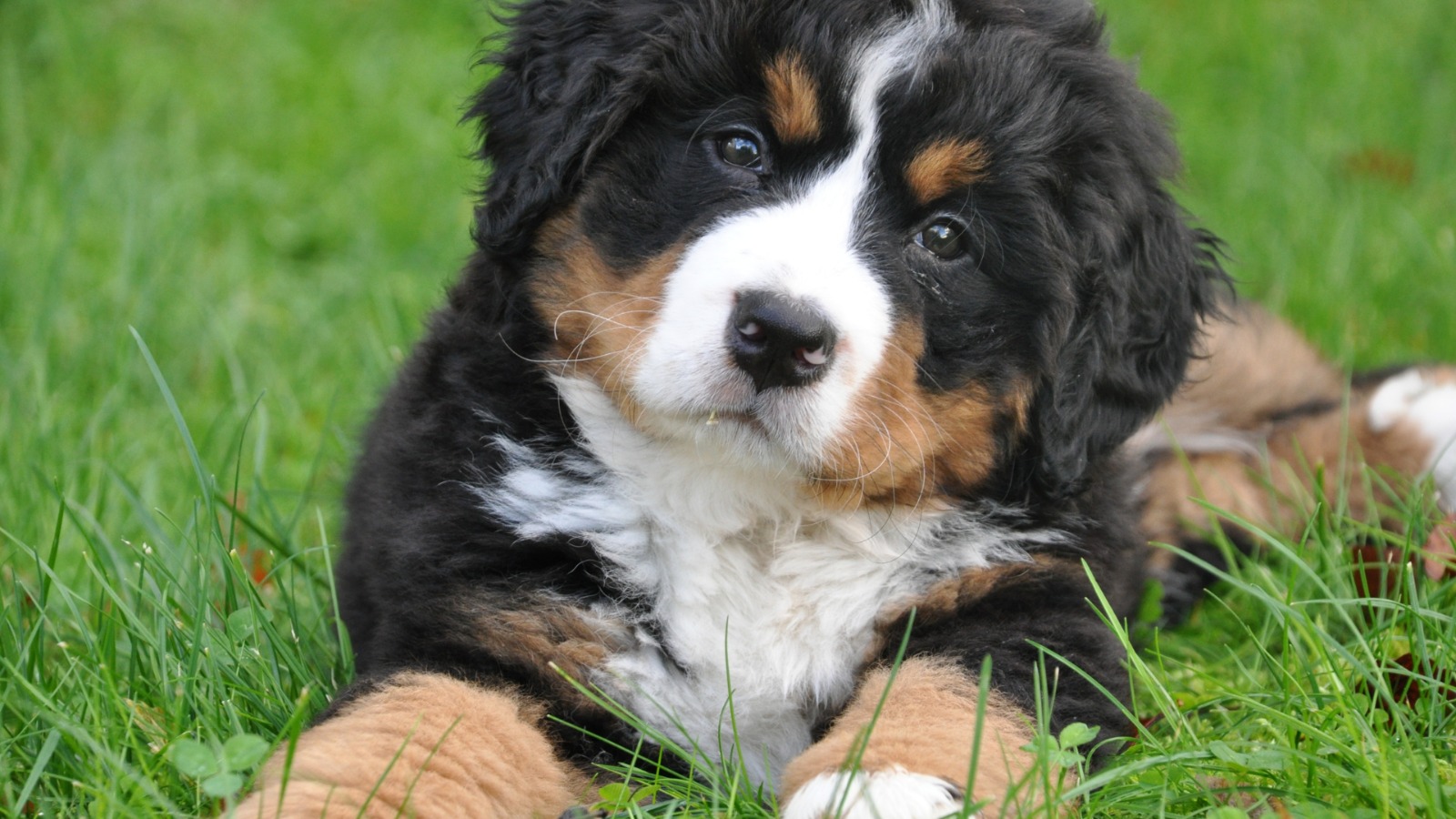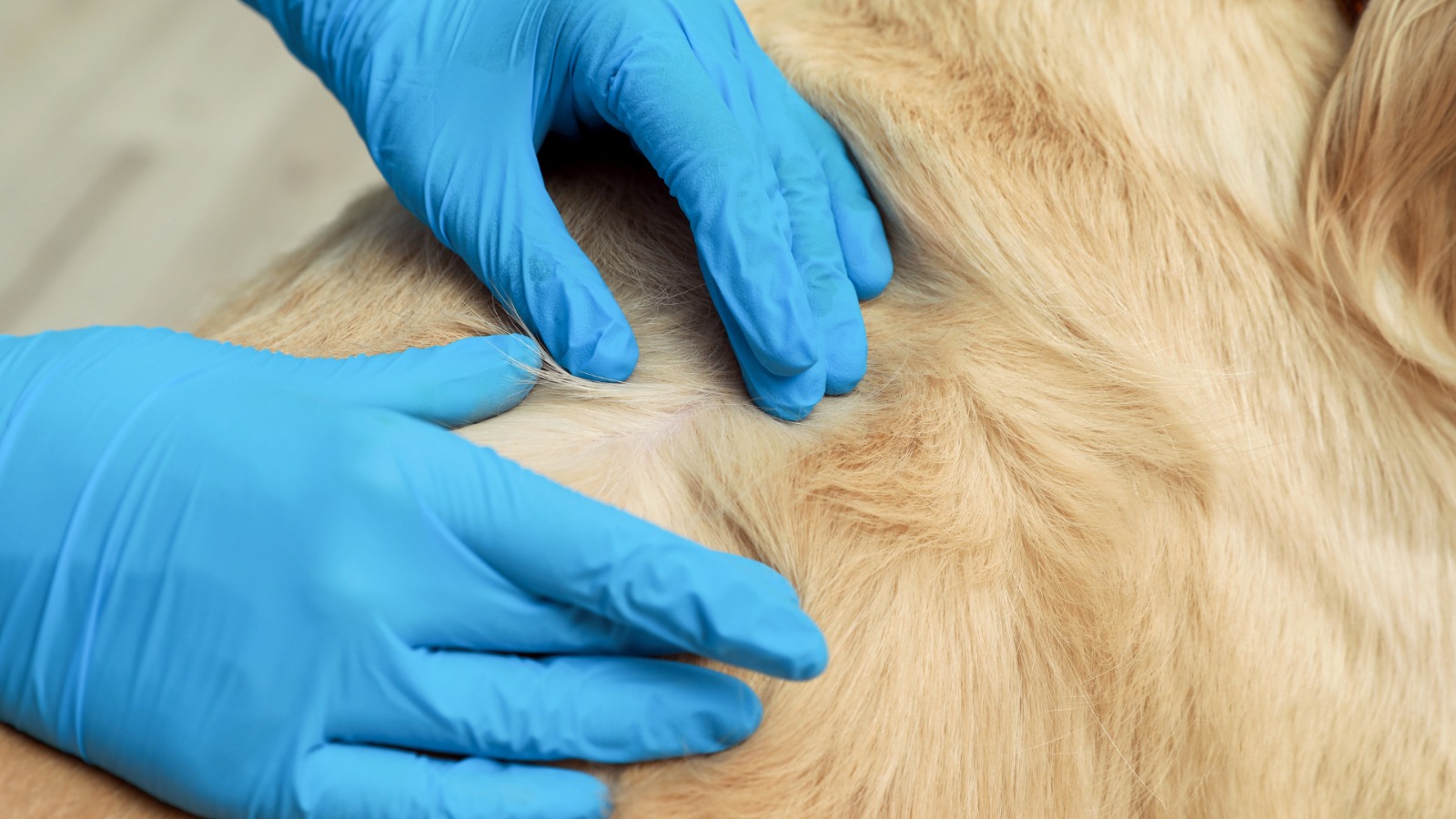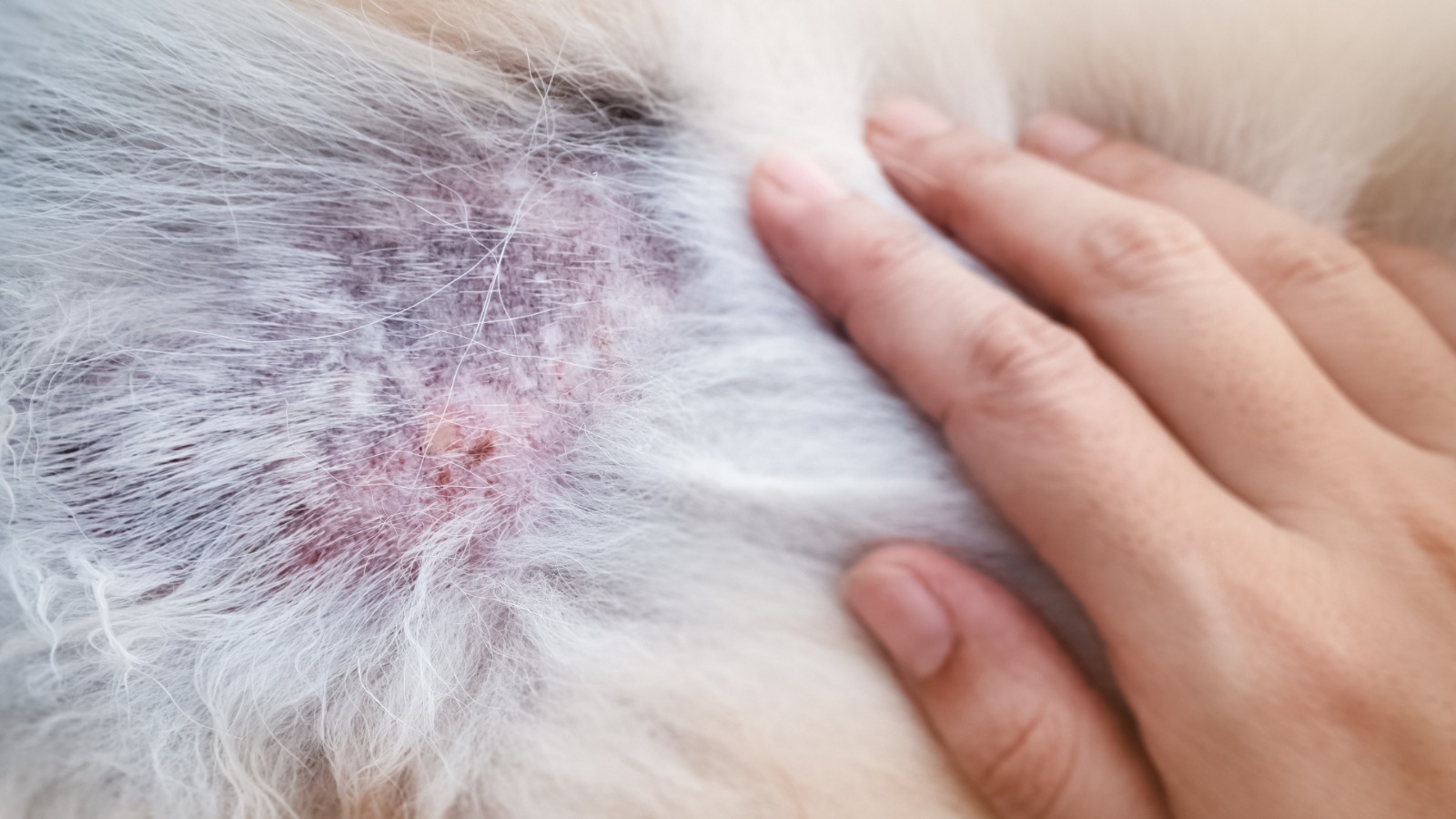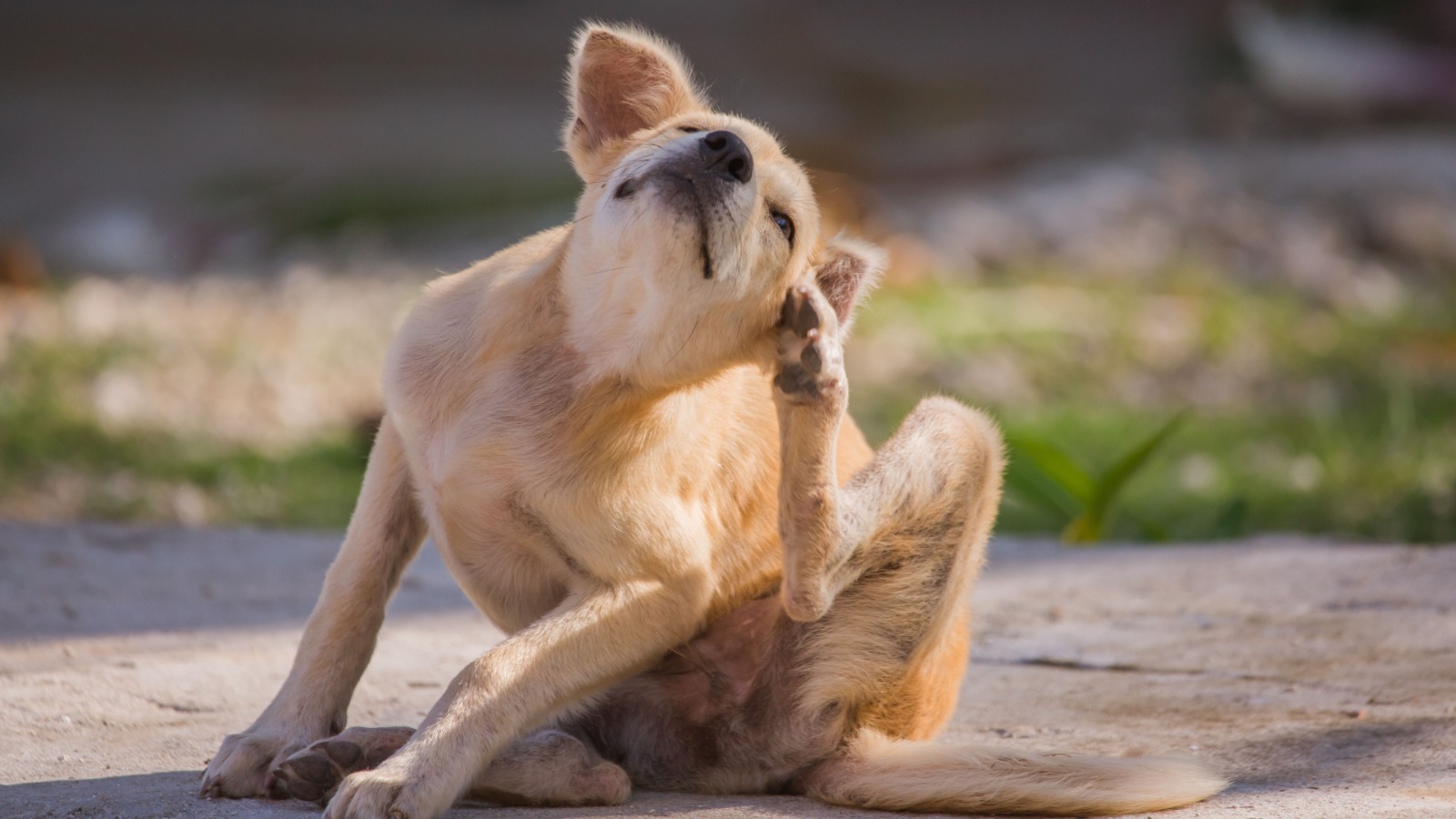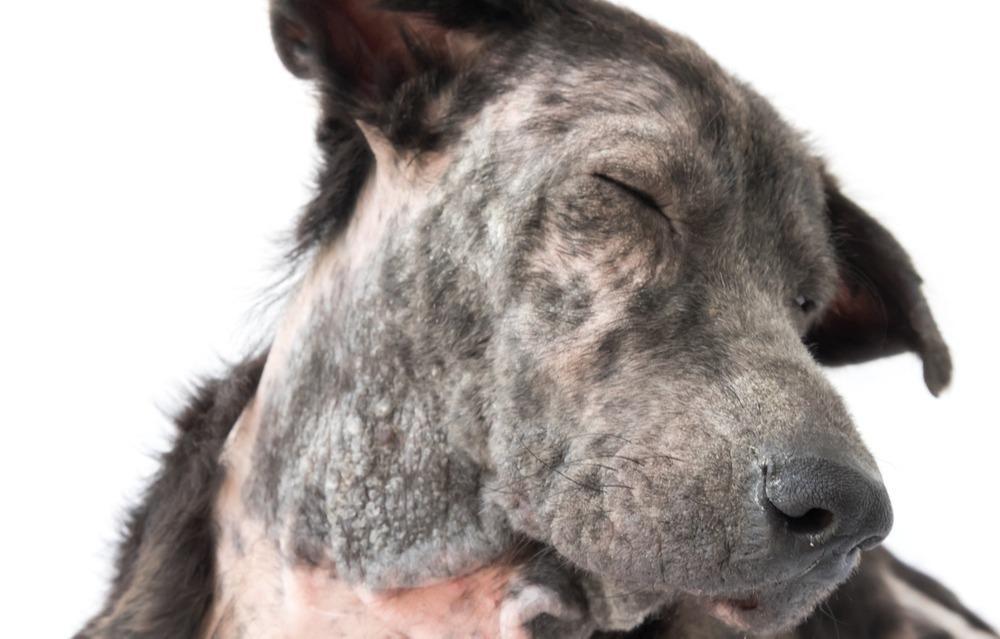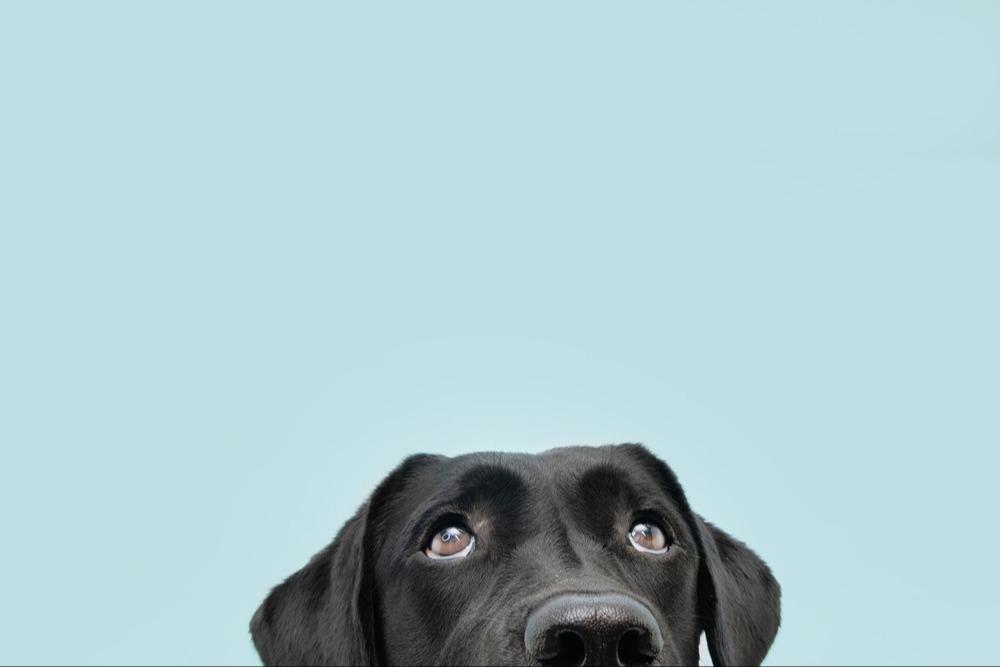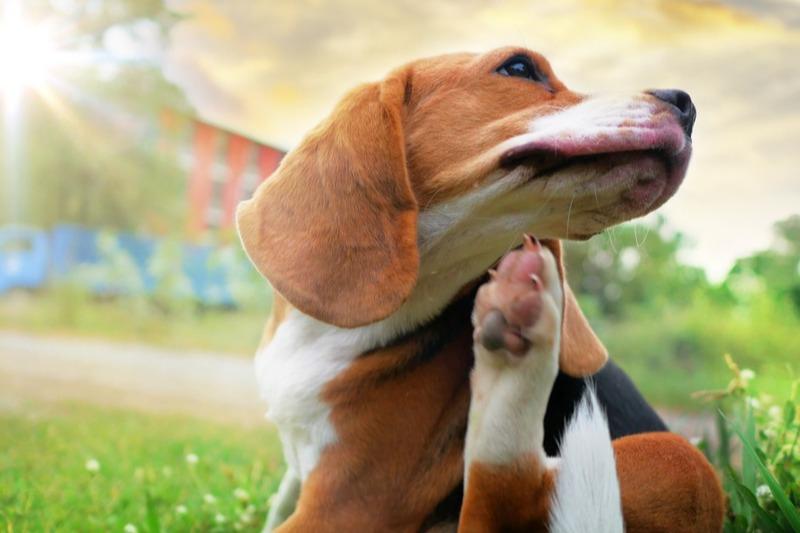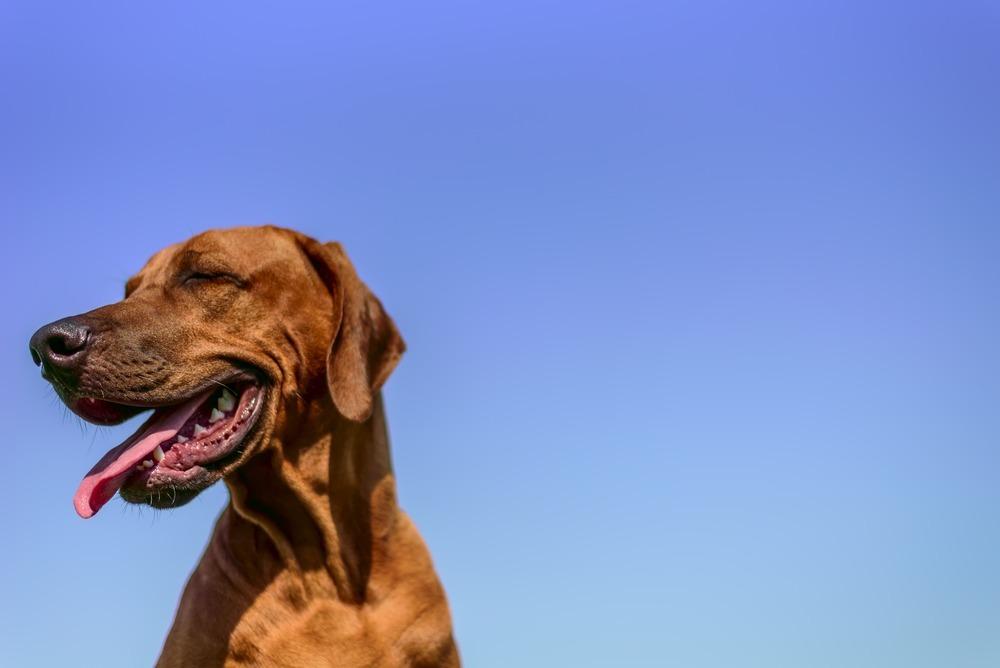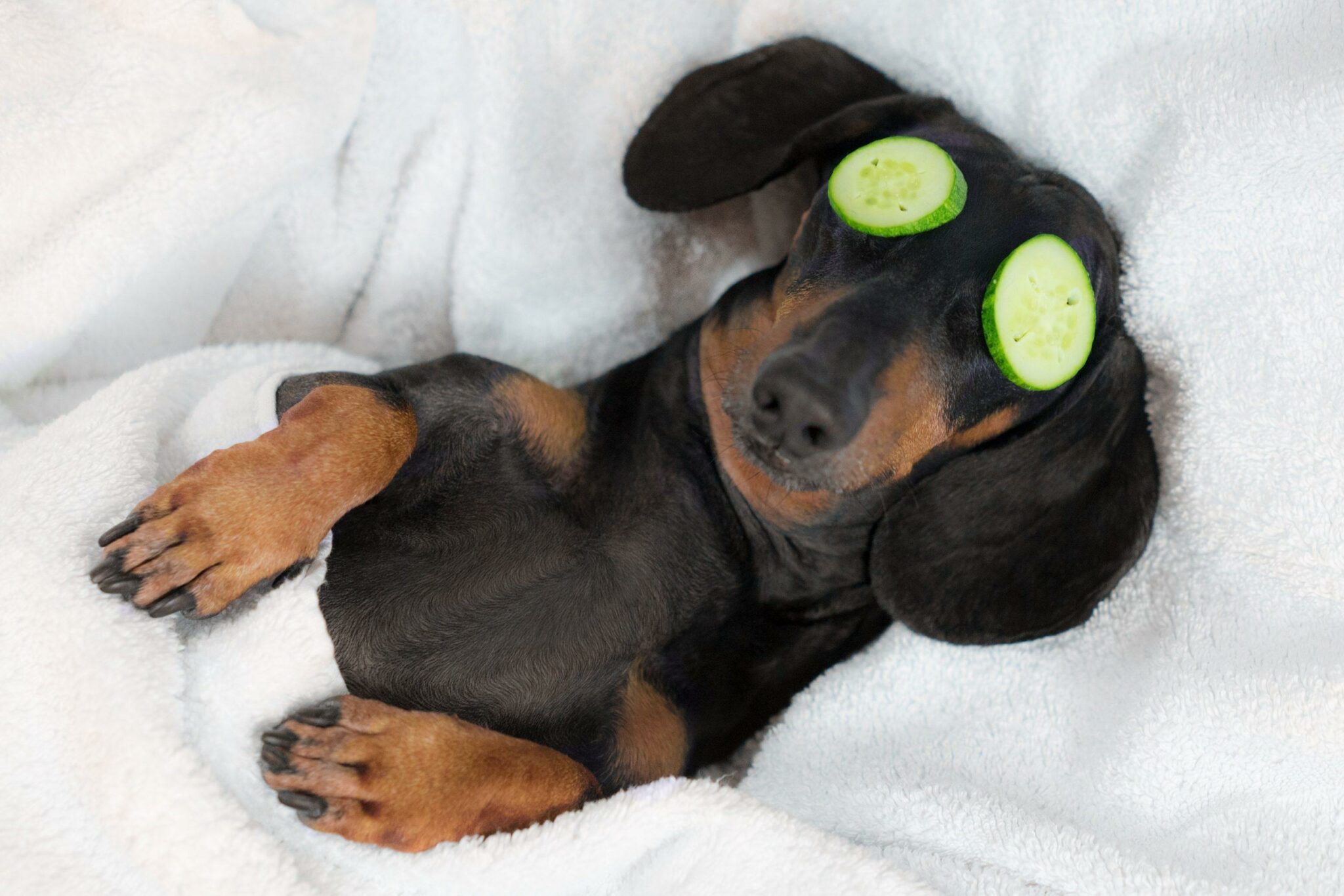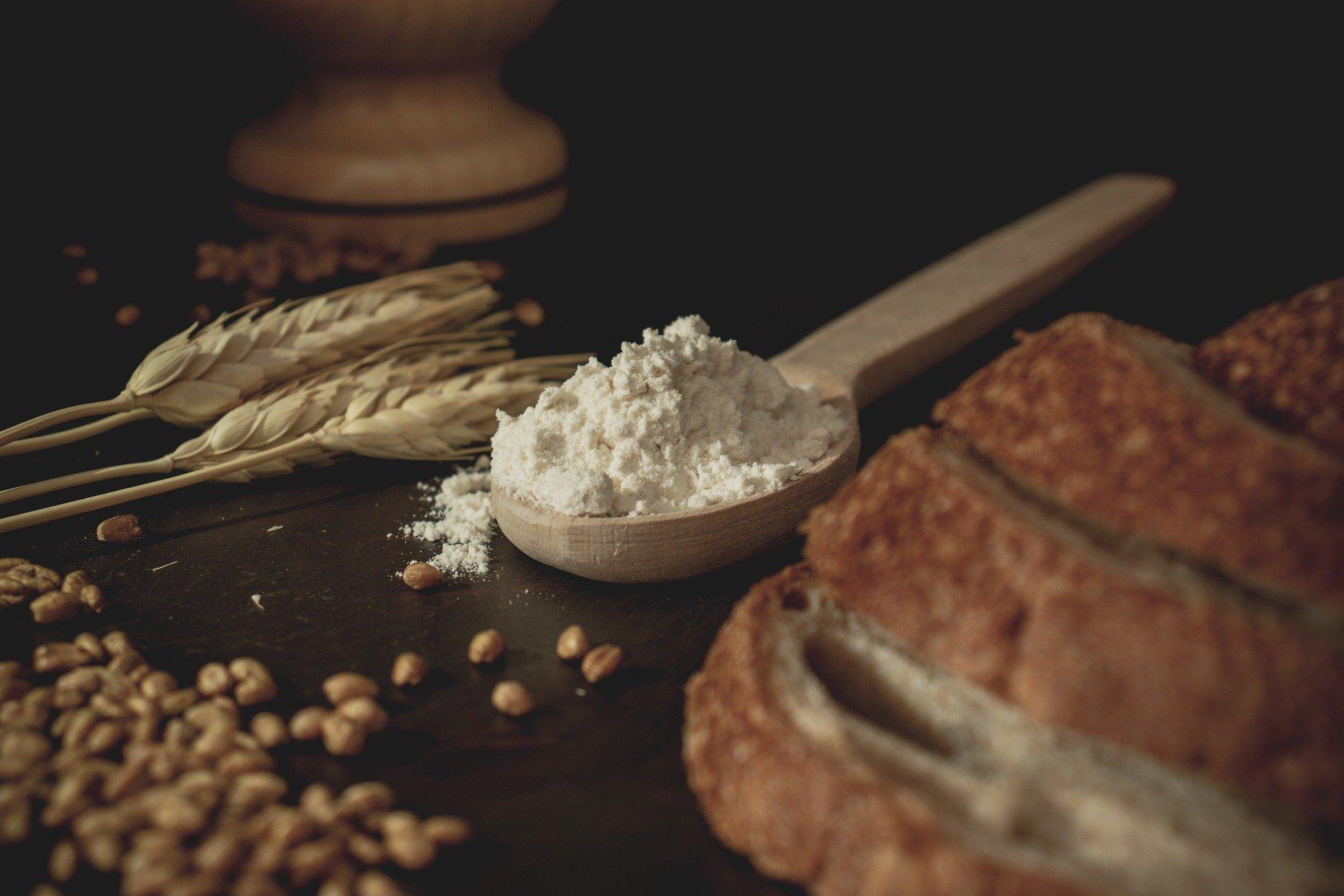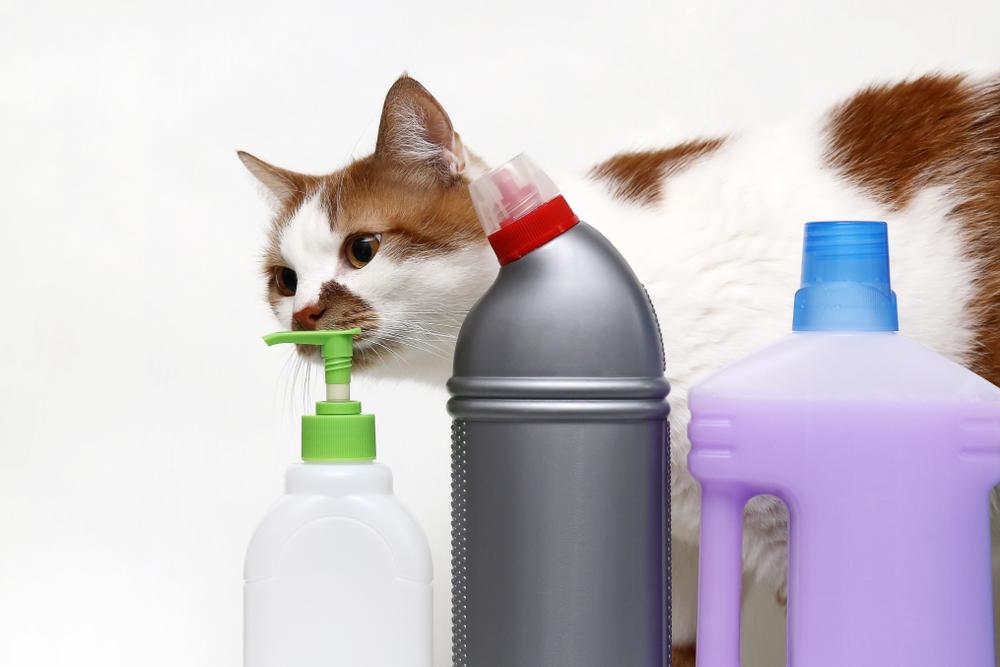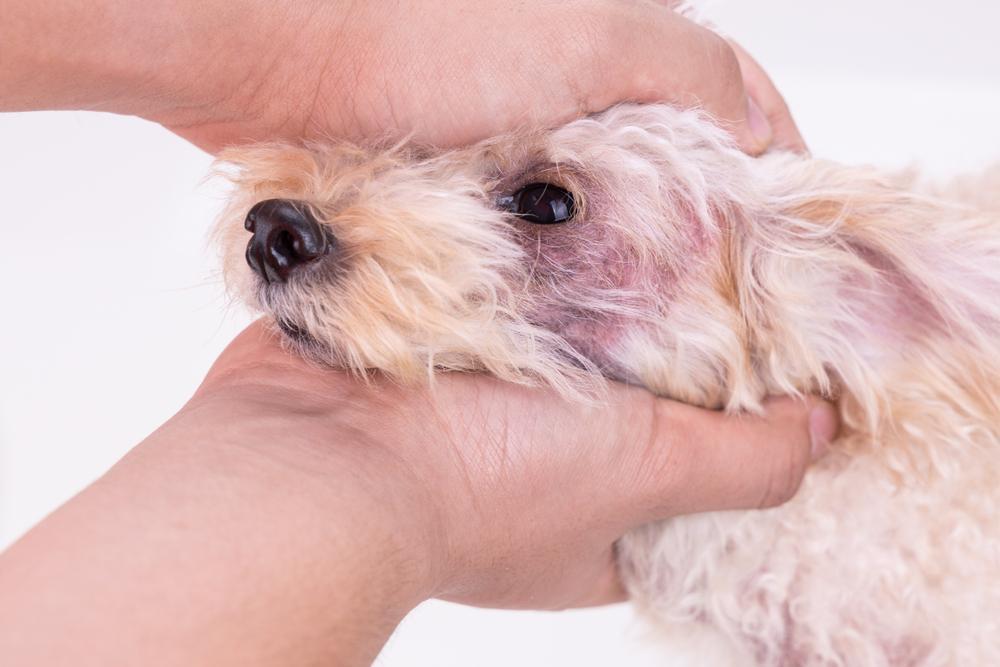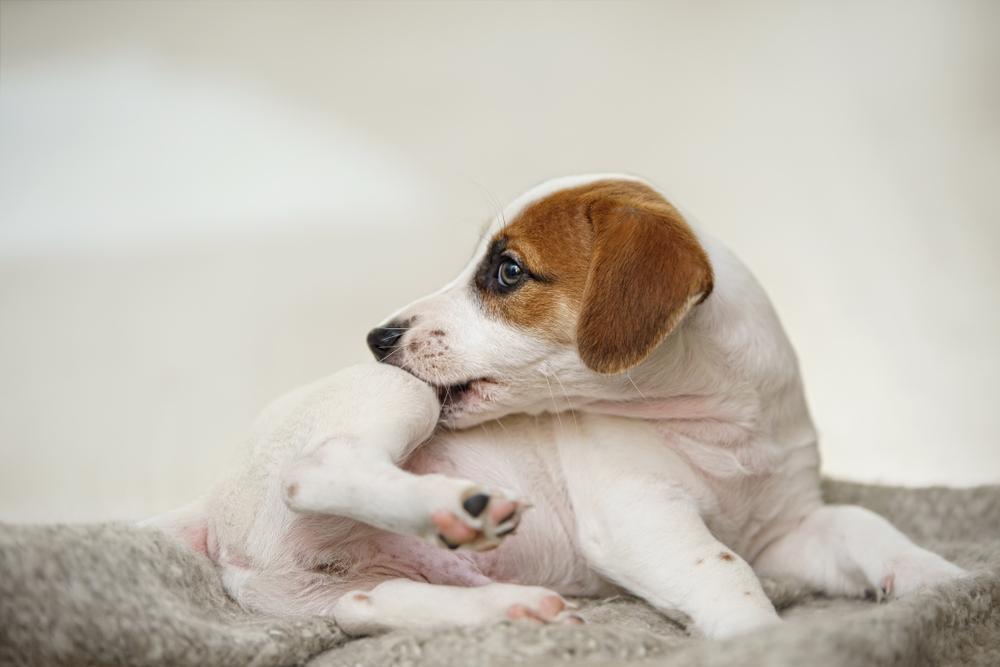Here at My Pet Nutritionist, we see lots of cases of Hotspots. Those seeing a hotspot for the first time can be worrying; those who deal with them regularly may feel overwhelmed, and frustrated at their regular reappearance. In this blog we will look at what hotspots are, how they happen, their link to gut health, and how we can support the body to heal them efficiently.
What Are Hotspots?
Hotspots are scientifically known as Pyotraumatic Dermatitis. Another common name for them is ‘Acute Moist Dermatitis’; this name gives more of a visual impression of what you can expect to see of a hotspot case. They present as red raw, moist areas of hairloss, and can happen on both dogs and cats. There is no specific place hotspots can happen on the body, and they tend to show up very quickly.
Often confused with ringworm, hotspots are wet in appearance, and often more open/raw looking than ringworm. Ringworm also tends to occur in patches, as opposed to one single spot.
Are they sore for your pet? Yes! Hotspots can be very sore for your pet, so it’s important not to leave them.
You may notice increased itching and licking of the area, as well as potential behavioural changes due to pain. The sore my ooze liquid, particularly if the hotspot has become infected, which would also bring an unpleasant odour. The fur around the edge of the lesion may be matted.
There is no correlation between age, sex or breed when it comes to the likelihood of s dog getting a hotspot.
Findings Here
What Causes Them?
Hotspots are caused by bacterial overgrowth, or are secondary to another underlaying health issue. The biggest trigger for hotspots, is repeated itching of an area on the body. This can make hotspots a secondary health problem to allergies and intolerances, flea infestations and other insect bites, ear infections, grass seeds, stress and anxiety, and poor grooming husbandry when matts are close to the skin.
The constant itching and licking of an area makes the perfect growth site for bacteria – moisture and warmth are bacteria’s favourite conditions!
Findings Here
Findings Here
Hotspots and Gut Health
As with most skin related problems, there is a huge link with poor gut health. We need to look closely at the Skin-Gut Axis. The skin and gut barrier share many qualities, as they’re both highly vascularised and innervated due to their role in both immune function, and neuro-endocrine function.
When looking at the inside of the gut and the surface of the skin, to the naked eye they may seem worlds apart, but both are covered in epithelial cells which both make direct contact with the corresponding environment (the skin contacts particles in the air, things we touch etc, and the inside of the gut touches everything moving through the gut).
The biggest similarity between the skin and the gut, is that they both possess their own microbiome. I’m sure you’ve heard us talking about the microbiome on many occasions; but that is because the microbiome is so incredibly important for health and proper functioning of various systems and organs. The microbiome is made up of all microbes the relevant organ uses, and makes contact with, including good (and bad!) bacteria, viruses, fungi, protozoa and other parasites.
There are many studies which prove positive links between probiotic supplementation and skin quality, which can be found in our
blog about the gut-skin axis!
Metabolites from the gut are shown to link directly to the skin’s ability to fight off ‘nasties’ which would in turn, reduce the risk of hotspots. An important neurotransmitter called Acetylcholine also plays a role in the functioning of the skin’s barrier, and how it deals with overgrowth of bacteria.
Supporting the Body for Healing
If your dog currently has a hotspot, it’s very important to treat it as soon as possible, as it won’t go away on it’s own. If the hotspot is oozing a yellow or creamy colour, you will need to seek veterinary attention, however it is important to work on the gut following use of antibiotics your vet may prescribe.
Step 1: Shave the Fur
Gently shave the fur around the hotspot – this enables you to see the full extent of the hotspot, and gives you a clean area to treat it, without the risk of fur getting into the wound. It also allows the hotspot to ‘breathe’, which is imperative in helping it dry up.
Step 2: Clean the Area
Using either boiled and cooled salt water, colloidal silver, Leucillin/Dew, or probiotic wound spray, gently clean the area to ensure there’s no bad bacteria on or around the hotspot. Pat it dry gently with a cotton pad.
Step 3: Apply Green Clay
With a clean, soft brush, such as a clean makeup brush, lightly dust some green clay on the hotspot – green clay is an excellent ‘staple’ for the dog cupboard (come on, everyone has a dog cupboard or drawer)! Green clay helps remove toxin from the skin, and helps dry the wound out. When purchasing your clay, ensure the product is 100% green clay, as some products contain added ingredients, including fragrances, which we definitely don’t want to use on our dogs!
If you spot the hotspot getting wet through the clay, pop a little more on.
Reapply the green clay once or twice per day, and keep the area dry at all times!
Step 4: Prevent the Dog from Licking or Itching
It’s important to not let the dog lick the wound, or get it wet. Itching the wound can aggravate it too, so don’t let them do this! You may need to resort to the cone of shame (Elizabethan collar, lampshade, or whatever you might call it!) for a few days to achieve this. Depending on where on the body the hotspot is, you may be able to use a clean t-shirt or sock to help cover it.
Step 5: Wait!
Hopefully itching should subside in a few days, and within two weeks, the fur should be growing back, and the wound gone completely. Keep reading to find out how you can help prevent more hotspots in the future!
Supporting the Body for Prevention
Feeding a fresh food diet will always be our number one suggestion for any health issues, and this is no different for those suffering from reoccurring hotspots. It all links back to gut health – the gut simply cannot thrive on ultra processed, high carbohydrate dry food. A balanced fresh food diet, whether raw or cooked to one of our balanced recipes would be a great start to good gut health.
Reduce exposure to toxins in and around the home! This includes worm and flea treatments, household cleaning products, chemical laden laundry products, weed killers and other gardening products. Wiping paws and low undercarriages after outings is also important – this links back to the pathway between the skin and the gut, and again to gut health.
Up the omega 3s! Omega 3 is anti-inflammatory, and our canine’s meaty diets are naturally high in omega 6, especially farmed meats. Omega 6 is inflammatory, so to balance out that inflammation, its important to increase consumption of omega 3. If we don’t reduce inflammation in the body, many health complaints may arise, and hotspots are one of these! Hotspots themselves are a sign of inflammation, so get those omega 3s in the diet! The most important type of Omega 3 in this situation, is Linoleic Acid (LA) which helps to moisturise, seal and protect the skin, which I turn allows the correct ecology of bacteria, viruses and fungi to flourish on the skin.
Gut work is incredibly important to keep a strong immune system, as 70-80% of the immune system lays in the gut. Keeping the gut in tip top condition, keeps the immune system strong – and as we all know, a strong immune system leads to less health issues as the body is naturally able to fight pathogens. To heal the gut from any damage (whether its from over use of chemical treatments, use of household or garden products, following antibiotics etc), a mucilage herb, teamed with a high quality soil based probiotic is a great combination. Our very own all-in-1 product,
Gut Guardian may be your best friend!
Get on top of food intolerances, and environmental allergies as best you can. You may need to undergo a full food elimination, and gut work will definitely be required. Repeated itching and licking from allergies and intolerances provide the best environment for bacterial overgrowth, so avoiding this by getting them under control, can not only make your dog more comfortable, but reduce the risk of further hotspots.
If your dog suffers with, or is suffering with hotspots whether it’s a regular occurrence or you are experiencing your dog’s first one, this comprehensive guide should have helped you on your journey to preventing, and healing them. If you feel you may benefit from some tailored 1-2-1 advice, our team would love to hear from you! You can book a consultation here.
Team MPN x

